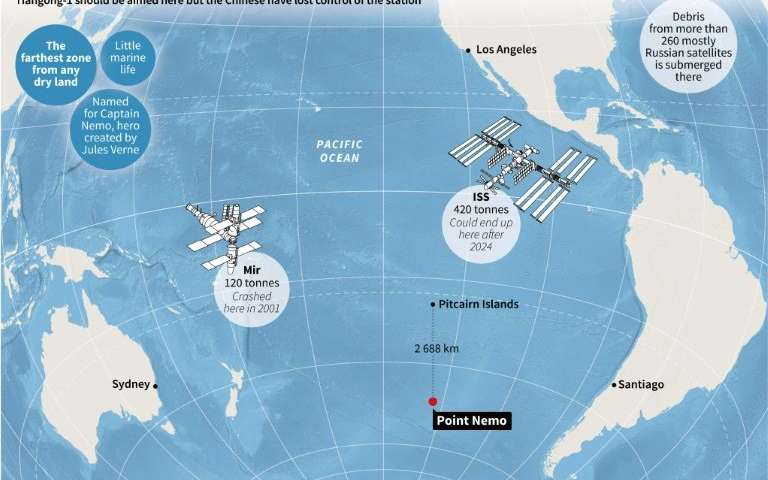
By Miro Korenha and Alexandra Patel
Point Nemo, standing for no one, lies 4,000 meters below the ocean’s surface and it’s the spot where hundreds of fallen spacecraft lie in the “space graveyard”. Located between Australia and South America, this area is unpopulated and lacking in wildlife. Since the 1970s, at least 260 spacecraft have been laid to rest at Point Nemo. While smaller pieces of satellites will burn up as they fall through the atmosphere, the larger pieces survive and are able to reach the Earth’s surface. Due to its inaccessibility, Point Nemo is where many decommissioned spacecraft are directed to land.
What Lies Beneath: The SpaceX rocket, 5 European Space Agency cargo ships and six Japanese HTV cargo craft have all met their end at Point Nemo. More than 140 downed Russian resupply vehicles also lie beneath the sea at this location. By far the largest object descending from the heavens to splash down at Point Nemo, in 2001, was Russia’s MIR space lab, which weighed 120 tons. It is predicted that, in 2024, the International Space Station will too end up in this watery grave when it returns to Earth.
A Final Farewell: Precise engineering is required to tactically position the satellites so that their descents align with Point Nemo. During the decent, space fragments and debris can stretch across an area as long as a thousand miles. Due to these risks associated with the falling debris, smaller satellites, when they reach their end, are positioned to land and die at Point Nemo. However, for the larger satellites, many are sent to “graveyard orbits” that are 22,400 miles above the Earth. These satellites, though they will remain in orbit for years to come, are pushed out of range and out of the way of Earth’s current, active satellites.
Why This Matters: Getting old spacecraft out of orbit is a key to preventing the formation of space junk, and many space agencies and corporations now build spacecraft with systems to de-orbit them. Some scientists, however, are calling for more advanced means to move old satellites out of orbit so that their fragments don’t damage active spacecraft.


